In the last chapter we learned that in every thinkable economy
and society is existing an unavoidable dependance of distribution
of the property, power, work and money. Concentration of property
can' t be the reason for equilibrium at work. And concentration
of power can' t be the reason for equilibrium of money. This does
not mean that everybody should have the same income or that
everybody should have the same power or the same property of
course. Because it' s not a realistic vision that everybody is
able to accomplish the same economic performance. The aim of a
successful reform should be the approximation of the differential
of money distribution and economic performance, that means the
minimization of the difference between individual income and
individual economic performance. In this case it' s reasonable to
guarantee everybody the same minimum income as social benefit
but not the same maximum income of course. But the main problem
of capitalism is still after the downfall of european socialism
the separation of economic performance and economic property.
Every thinkable reform can' t be successful which is not solving
this main problem of capitalism.
We know, that in a private market economy the government can' t
manage the distribution of gross income in private companies. But
it is an important task of the government to decide about the
difference of gross income and net income. This is the most
underestimated task of the legislator.
It' s a reality that no traditional scientist is convinced about
an optimal system for private firms. Neither the politicians nor
the economists or the lawyers have a theory about an optimal tax
structure for private companies. In the consequence the
communistic scientists denied any tax system in their theory and
accepted taxpaying in the reality only in order to assist the remote
control of manufacturing firms and industrial economic units. In
capitalism the economic companies have to calculate their market
value every year. The growth of the market value of the whole
firm in one year is defined as the company income. This
calculated company income is burdened with a linear tax. In some
countries the market value of a firm is a tax base too for a
property tax.
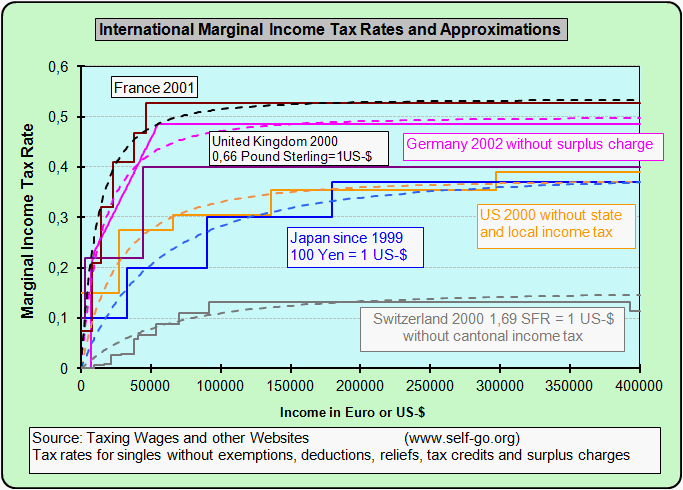
Germany is the only OECD country which uses a tax structure without brackets.
It uses not a linear tax but a linear marginal tax rate.
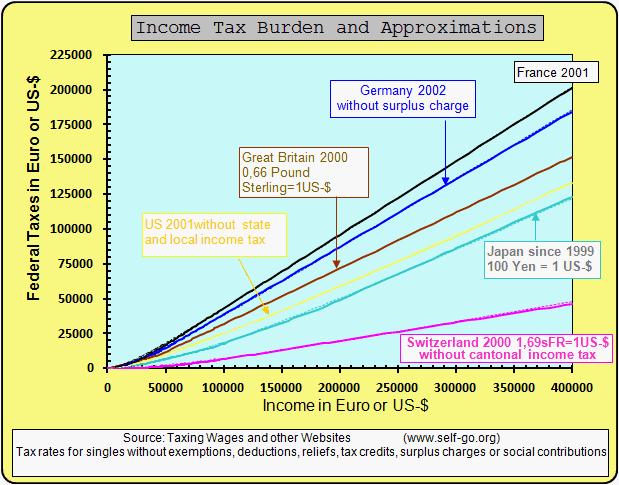
In this diagram you see the income tax rates of the same countries.
In the above diagram of the marginal tax rates are shown the
derivations of the same formulas.
Such taxes from companies are very dependant from the business
cycles. In boom eras the capitalistic companies are burdened with
high taxes and in depression eras many companies are without any
tax burden. An additional disadvantage is, that this tax depends
from the inflation rate. In years with low inflation rates the
firms need no ascending property for their existence. In the era
of globalization many companies are organized in groups with a
parent company and many subsidiary companies. Such companies can
sell and purchase goods and firms in their own group in order
to make the profit in countries or regions with low tax rates or
even in tax heavens.
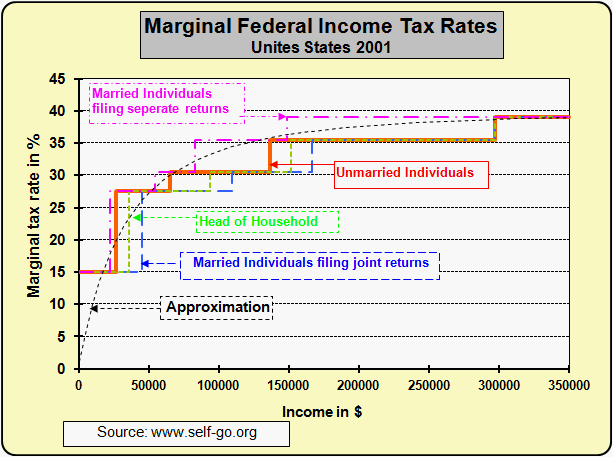
The income tax structure of the most important economies depends from
the marital status.
In this diagram are shown as an example the marginal federal income tax
rates of the United States.
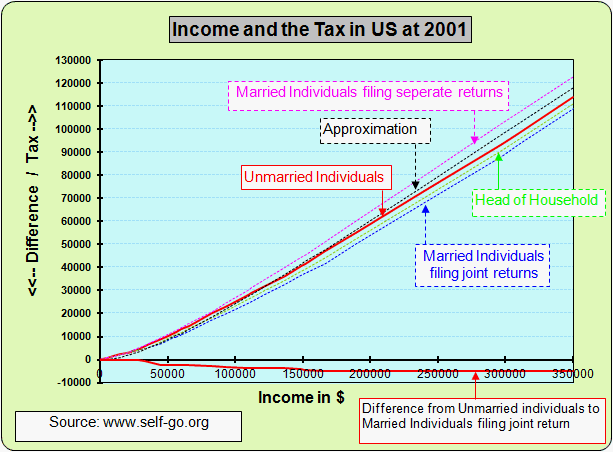
The average federal income tax rates of the United States at 2001.
At the above diagrams are the derivations of the same formulas.
This means that the accumulation of capital in the decades of the
reigning shareholder value ideology was becoming easier in the
most countries. But the states need more and more money for the
social expenditures in the growing economies of the 20th century,
especially in the era after World War II. Hence the labor
compensation was burdened continually with more taxes and social
contributions. If an employer want save money, he must reduce the
costs for labor compensation. This option is possible if he can
subsistute workers through machines for production. They know
that the costs for means of production are charged with very less
taxes and contributions.
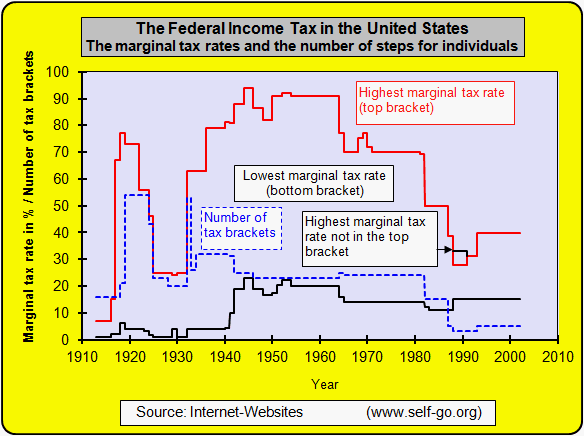
The top brackets of the income tax from the United States differed very
much at their history.
It seems to be that from this feature depends the prosperity of an
economy.
But also european economies were in the past successful with very
different top marginal tax rates.
In a market economy every seller and every buyer is comparing the
market value of a product with his own advantages. But this rule
is not a reality in the capitalistic labour market. In
capitalistic labour market the worker knows, that they can expect
wage only perhaps 50% of the costs of the employer. Hence, if the
worker can produce less than 200% of a machine, it is cheaper for
the employer to substitute the worker through a machine in
order to save money for the wage and the taxes and the social
contributions of the wage. Obviously in the capitalistic tax system the
workers are a great evil like tobacco and alcohol and the
machines for production are a great bless for the people like
bread and water.
Is this really unavoidable?
If such a tax system would be fair, this homepage would be not
necessary.
Naturally machines are not an evil for economical prosperity. But
a fair tax system needs some essentials in order to reach economical
and social justice.
In the next chapter we discuss
7. The principles of a fair tax system




